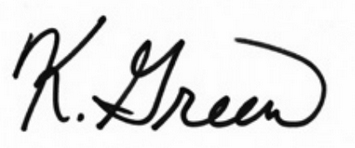Last week, I sent out the July issue of Yield Shark with my latest stock recommendation. It’s a speculative play on a demographic trend I’ve been following for a few years. But, while the files were working their way through production, something unfortunate happened—the shares ticked higher and out of my buy range.
That’s what I want to happen after I find a stock, of course, but not before my readers have a chance to get in. I had to add a note to my buying guidance to have patience and let the shares come to us. We weren’t going to chase the stock.
By the end of the week, shares had dipped and we were able to get them on our terms. We made the right decision. I won’t let the market pull me into a game of tag. You shouldn’t either.
This is going to be one of the most important investing principles to follow through the end of the year. The CNN Fear & Greed Index is stuck on the line between greed and extreme greed—and I still don’t know why.
Stick With Your Guidelines
It doesn’t matter if you’re a dividend or growth investor, the basic goal is to buy low and sell high. Chasing stocks is a surefire way to end up buying high and selling low. That’s exactly what will happen if we let our emotions control our trades.
Had we succumbed to FOMO last week, we would have overpaid, sacrificed yield, and be kicking ourselves by Friday when shares retreated.
Call them whatever you want, but your personal trading rules should act more like guidelines. Make exceptions and adjust when it makes sense. If you can’t rationalize an exception, stick to your guns.
As income seekers, we want to buy low because that means a higher dividend yield. Every stock I add to my watchlist or buy list, I also determine the yield I need to receive in exchange for the risk.
I use several factors to calculate the minimum yield percentage I will accept.
We know a boring company such as a consumer staple tends to pay a lower yield. And we know that if we are taking on more risk or uncertainty, we deserve a higher yield for holding the shares.
Armed with my minimum yield, I use this formula to calculate the maximum price I’m willing to pay:
The entry price becomes my buy-up-to price. And I stick to that price unless something changes to warrant an adjustment in the yield I will accept.
Again, don’t chase stocks, especially in this greedy market.
Last Chance for This Utility Fund
There are reasons to make adjustments.
I recently updated my recommended buy-up-to price for Reaves Utility Income Fund (UTG), a stock I mentioned on our live call. The fund’s goal is to provide tax-advantaged dividend income from investing in utilities and other infrastructure related companies. Many people like that it pays out monthly instead of quarterly.
Shares of UTG are up 23.7% year to date.
The Utilities sector is the third best performing sector year to date, behind Industrials and Information Technology. But I didn’t update the buy-up-to price in an attempt to chase this trend.
This month, the fund raised its distribution from $0.19 to $0.20 monthly. It’s the first increase since July 2021! That’s great news. Next, it’s time to recalculate how much we’re willing to pay for shares using the new annual dividend amount.
There are other reasons to make adjustments. If management throws a curveball during an earnings call, or announces a new transformation plan, you might want to target a higher yield. The result would be tightening your buy-up-to price.
Stay vigilant through earnings season and the rest of 2025. Don’t let market swings pull you in either direction. And if you want to grab shares of UTG, you should act before they hit $38.40 to lock in a 6.25% yield.
For more income, now and in the future,





